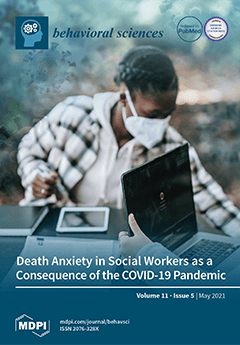Open AccessArticle
Symptoms of Addictive Eating: What Do Different Health Professions Think?
by
Megan Whatnall, Janelle Skinner, Antonio Verdejo-Garcia, Adrian Carter, Robyn M. Brown, Zane B. Andrews, Chris V. Dayas, Charlotte A. Hardman, Natalie Loxton, Priya Sumithran and Tracy Burrows
Cited by 1 | Viewed by 14614
Abstract
The symptoms of addictive eating are often debated, with some overlap in symptoms with substance addictions or other disorders such as binge eating disorder. This study explored the levels of agreement with symptoms of addictive eating among different health professions, the conditions they
[...] Read more.
The symptoms of addictive eating are often debated, with some overlap in symptoms with substance addictions or other disorders such as binge eating disorder. This study explored the levels of agreement with symptoms of addictive eating among different health professions, the conditions they provide advice for, and the population group/s they work with. An online cross-sectional survey was conducted in February–April 2020 including 142 health professionals (87% female, 65% residing in Australia, 28% each working in private practice/hospital settings). Of these, 47% were dietitians, 20% psychologists/psychotherapists/counsellors, 16% other health practitioners (e.g., social workers), 13% health researchers, and 5% medical professionals. Agreement with 11 statements relating to addictive eating symptoms was assessed on a scale of 1/strongly disagree to 5/strongly agree (e.g., certain foods produce physiological effects in the brain rewards system). Differences in agreement by health profession were assessed by one-way analysis of variance. There were significant differences in agreement with individual statements between health professions. Psychologists, psychotherapists, and counsellors reported lower agreement to statements relating to physiological effects in the reward system, withdrawal symptoms, and over-eating to alleviate stress/anxiety, than other professions (
p < 0.05). Those providing advice for disordered eating only reported lower agreement across statements compared with those providing advice for overweight/obesity or both (
p < 0.001). There were minimal differences based on the population group/s that health professionals work with. There is some agreement among health professionals regarding addictive eating symptoms, however, this differs by profession and the conditions they treat. This study provides a novel perspective on health professionals’ views on addictive eating symptoms, and there is a need for more research to explore the concepts further.
Full article






